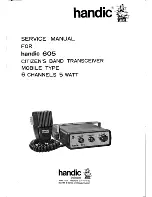
32
33
UNIVERSAL TRANSMITTER
PReasy 4116
• Input for RTD, TC, Ohm, potentiometer, mA and V
• 2-wire supply > 16 V
• FM-approved for installation in Div. 2
• Output for current, voltage and 2 relays
• Universal AC or DC supply
Advanced features:
• Programmable via detachable display front (4501), process calibration, signal
and relay simulation, password protection, error diagnostics and selection of
help text in several languages.
Application:
• Linearised, electronic temperature measurement with RTD or TC sensor.
• Conversion of linear resistance variation to a standard analogue current /
voltage signal, i.e. from solenoids and butterfly valves or linear movements
with attached potentio meter.
• Power supply and signal isolator for 2-wire transmitters.
• Process control with 2 pairs of potential-free relay contacts and analogue
output.
• Galvanic separation of analogue signals and measurement of floating signals.
• The 4116 is designed according to strict safety requirements and is thus suit-
able for application in SIL 2 installations.
Technical characteristics:
• When 4116 is used in combination with the 4501 display / programming front,
all operational parameters can be modified to suit any application. As the
4116 is designed with electronic hardware switches, it is not necessary to
open the module for setting of DIP switches.
• A green / red front LED indicates normal operation and malfunction. A yellow
LED is ON for each active output relay.
• Continuous check of vital stored data for safety reasons.
• 4-port 2.3 kVAC galvanic isolation.
33
HOW TO DISMANTLE SYSTEM 4000
First, remember to demount the connectors with hazardous voltages.
Picture 1:
Detach the module from the DIN rail
by lifting the bottom lock.
When front LED lights red / display shows AO.ER:
PR 4116 is designed with a high safety level. Therefore, a continuous
measurement of the outgoing current is carried out on a 4...20 mA output
signal. If the current is 0, a fatal error mode switches on the red front LED
and disables the relays. If the analogue output is not used, pins 11 and 12
must be short-circuited in order for the module to function. The fatal error
mode can only be reset by switching off and then switching on the supply
voltage to the module.
32
















































